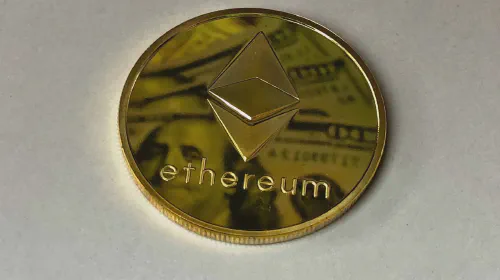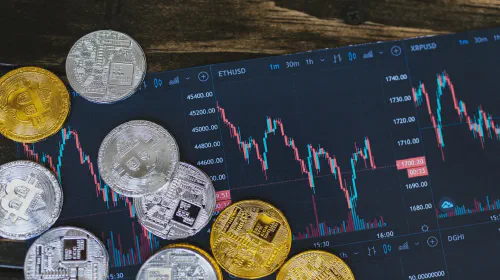Are Nfts Bad for the Environment?
Salomon Kisters
Sep 19, 2022This post may contain affiliate links. If you use these links to buy something we may earn a commission. Thanks!
With the advent of Bitcoin and the gradual adoption of cryptocurrencies, life has changed a lot for many of us. There’s a whole new financial market out there that deals in digital currencies and assets, effectively seeking to replace the need for traditional systems that are slow and cumbersome goliaths in comparison.
Although the crypto revolution has had an overall positive impact on the world, it is not without its issues.
Energy consumption is the main issue that people have with cryptocurrencies. Bitcoin alone uses 127 terawatt-hours of electricity in a year, which is more than the entire annual consumption of the country of Norway.
There’s a lot of debate around how much energy cryptocurrencies use, but not much of it focuses on the effect that non-fungible tokens (NFTs) have on the environment. In fact, the majority of people don’t know much about NFTs apart from them being obscenely expensive and wacky art.
To understand how the minting and sale of NFTs impact the environment, it is essential to first have an understanding of the consensus protocols that are required to carry out transactions and mint cryptocurrencies and NFTs on blockchains. The first and most well-known of these protocols is the Proof-of-Work algorithm.
Proof-of-Work (PoW)
Contrary to popular belief, Proof-of-Work was not pioneered by Bitcoin. The essence of the protocol is to prevent people from cheating the system by requiring each participant to invest a significant amount of computing power to be able to do anything to the system. The idea was used by Hal Finney in 2004 to secure digital currencies by adapting it into an SHA-256 hashing algorithm.
Bitcoin tipped its hat to Hal by making him the recipient of its first transaction in 2009. In the context of blockchain technology, PoW requires people who are maintaining the blockchain to solve increasingly complex mathematical puzzles by contributing to the computing powers of their systems.
This is also more popularly known as cryptocurrency mining since users are rewarded for creating new blocks on the blockchain with new Bitcoins.
As we can all see from Bitcoin, PoW does not work on a significant scale because of the tremendous amount of power that is wasted. To fix that, a better way to maintain the blockchain while rewarding users was introduced. This is known as the Proof-of-Stake method.
How NFTs Operate in PoW
You might be wondering how NFTs fit into the PoW equation. There are various stages in an NFT’s life where it can have a disastrous energy impact on the environment.
Before an NFT is even minted, it is listed on an NFT marketplace. This is because it requires quite a hefty fee to mint an NFT in a PoW system, and most artists don’t want to take that risk if someone isn’t willing to purchase the NFT in the first place. The most popular example of such a system is the OpenSea marketplace which uses the Ethereum PoW protocol. It costs anywhere between $70 and $300 to mint an NFT on OpenSea.
When an NFT is minted in a PoW protocol, the process is the same as mining cryptocurrency - miners expend huge amounts of computational power (which in turn burns a lot of electricity) in a race to be the first one to mint the NFT and get rewards.
The problem with this is two-fold; not only does it waste electricity and contribute to global warming, but it is also a frivolous use of very high-end computing power that could be used for a lot more useful purposes.
How Bad is it for the environment?
The minting process is not a one-time phenomenon. Transferring the NFT to another marketplace that uses a different blockchain technology causes a repetition of the minting process, causing the same amount of energy to be burnt again. Therefore, as long as the NFT is being traded, it will be a burden on the environment.
Currently, an NFT-related transaction on the Ethereum blockchain uses about 260 kilowatt-hours of energy, which is almost equal to the amount of energy an average American household uses over a little more than nine days.
To produce this amount of energy, almost 150 kilograms of carbon dioxide is emitted, which is equivalent to the carbon footprint of 331,056 Visa transactions or 24,895 hours of watching Youtube!
The carbon footprint of PoW means that this technology is destined to be doomed. Is there no way people working on PoW protocol can still be environment-friendly and mint NFTs?
PoW and Energy Efficient NFTs
There are various ways people working in the PoW ecosystem can make their NFTs more environmentally friendly. Miners themselves can use renewable energy sources to ensure that they reduce their carbon footprint by using solar energy if they’re working on an individual level and hydro and wind energy if they’re using big server farms.
Everyone is aware of how highly-priced some NFTs are, and some deals go well into millions of dollars. Some part of these sales could be collected as proceedings to invest in renewable energy, therefore, offsetting some of the damage done by minting NFTs.
The NFT community as a whole could work towards forcing those who are minting NFTs to buy carbon credits. This would ensure that the NFT technology shifts towards being more sustainable and give a financial incentive to people to be more careful with their energy consumption.
Proof-of-Stake (PoS)
There is a more permanent solution to the PoW conundrum. Only three years after the inception of Bitcoin, the Proof-of-Stake technology was introduced in a paper by Sunny King and Scott Nadal. King and Nadal saw the exponential increase in Bitcoin’s energy consumption and knew that the problem would only be exacerbated in the coming years if no one did anything about it.
Instead of using computing power to validate miners, a Proof-of-Stake mechanism validates transactions on the number of coins the user is staking to reward them with cryptocurrency and allow them to mint new blocks on the blockchain.
There are various ways different cryptocurrencies use the Proof-of-Stake mechanism. Some require a minimum threshold to become a validator, while others will let you stake any number that you have. Just like with Proof-of-Work, people usually become a part of staking pools to increase their chances of getting a reward.
PoS and NFTs
There are various platforms and technologies that use PoS to reduce their environmental impact by producing green NFTs. Here’s a list of platforms that you can use if you want to ensure that your purchases are energy efficient:
- The Solana blockchain uses a combination of PoS and PoH technology. It has many NFT marketplaces to support the ecosystem, including Rabbit Hole, Magic Eden, and Solanart.
- Cardano is perhaps the most popular contender in the market. Many people believe that it will soon replace Ethereum as the next-generation blockchain technology. Its NFT marketplaces are called CNFT and Galaxy of Art.
- Tezos is another blockchain technology that is a great space for NFTs as well as NFT artists who are looking for support. Tezos supports the Rarible NFT marketplace.
- Algorand is currently the only fork-proof blockchain technology on the market. Thus, it is perfect for NFTs. Its energy consumption is also very reasonable, and it has several NFT marketplaces.
How Can You Help Save the Environment?
We are all familiar with the devastation global warming is wreaking on the world. Greenhouse gas emissions, global warming, and pollution are all proof of the harmful effects of human activities. The problem will only be more exacerbated in the coming years.
It is high time that we stop using fossil fuels that are destroying our environment and switch to renewable sources of energy. NFTs and cryptocurrencies using PoW protocols are some of the most frivolous uses of energy in the world today. The pollution they cause can be curbed by switching to PoS protocols.
If you ever buy a cryptocurrency or NFT, please check what technology is running under the hood. Collectively switching to PoS technology is a small but sure step towards fixing our climate-related issues.
Stay informed with the latest insights in Crypto, Blockchain, and Cyber-Security! Subscribe to our newsletter now to receive exclusive updates, expert analyses, and current developments directly to your inbox. Don't miss the opportunity to expand your knowledge and stay up-to-date.
Love what you're reading? Subscribe for top stories in Crypto, Blockchain, and Cyber-Security. Stay informed with exclusive updates.
Please note that the Content may have been generated with the Help of AI. The editorial content of OriginStamp AG does not constitute a recommendation for investment or purchase advice. In principle, an investment can also lead to a total loss. Therefore, please seek advice before making an investment decision.

7 Reasons Why Ethereum Is Different From Bitcoin
In this article, we’ll look at the differences between Ethereum and Bitcoin and see where Ethereum improved upon its blockchain technology by learning from its predecessor.

Counterfeit Protection With Blockchain [Interview] - OriginStamp.com
Learn how OriginStamp uses blockchain technology to protect against counterfeits and ensure data integrity in this insightful interview.

How Many Binance Coins Are There and How Many Are Left?
BNB has managed to become the third-most-popular crypto token in the world. But how many Binance coins are there, and how many are left?
Protect your documents
Your gateway to unforgeable data. Imprint the authenticity of your information with our blockchain timestamp